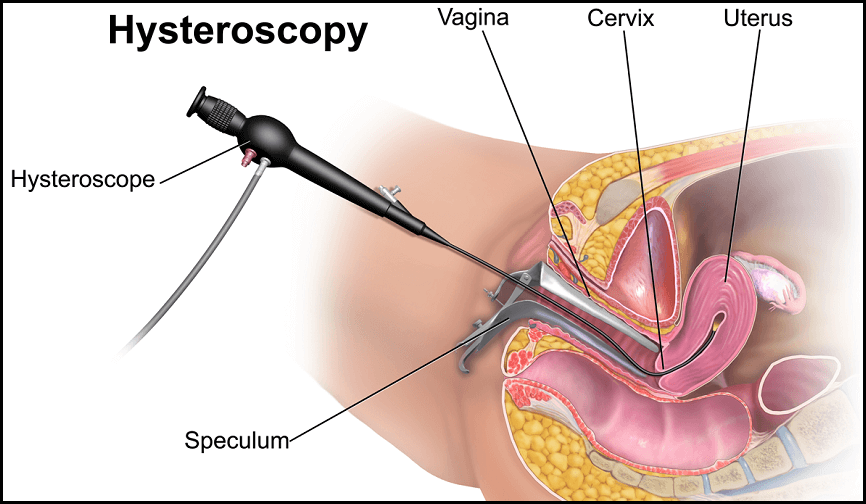A Hysteroscopy is a procedure to look inside your womb (uterus). It’s done with a narrow tube-like telescope with a camera called a hysteroscope. A hysteroscopy can be used to diagnose and/or treat a problem with your womb.
lYour gynecologist may recommend that you have a hysteroscopy for one of a number of different reasons. These include the following.
- To help find out what is causing you to have unusual bleeding from your vagina, for example heavy periods or bleeding after your menopause.
- To check for polyps (small growths of tissue in your womb lining) or some types of fibroid (non-cancerous growths of muscle in your womb). These may then be treated during your hysteroscopy.
- To see if there are any problems within your womb if you’re having problems getting pregnant or have had several miscarriages.
- To treat scar tissue (adhesions) within the lining of your womb.
- To take out an intra-uterine system (IUS), or coil, that has moved out of place.
- To carry out a permanent form of contraception (sterilization).
Diagnostic Hysteroscopy:
During diagnostic hysteroscopy, a device called Hysteroscope, with a max. diameter of 5 mm, is inserted into the uterus. Inside this device, there is a high-resolution telescope which the doctor uses to visually inspect the intra-uterine cavity( into the uterus).
Preparing for a Hysteroscopy:
Your hospital will give you some guidance telling you how to prepare for your hysteroscopy procedure. If you’re still having periods you should make sure there’s no chance that you’re pregnant at the time of your procedure by using contraception.
If you’re bleeding at the time of your procedure don’t worry. Your hysteroscopy can usually go ahead in most cases.
Hysteroscopy is often done as an outpatient procedure, especially if it’s being done to look for problems in your womb. You won’t need to stay in hospital overnight.
Your gynecologist may recommend that you have the procedure under general anesthesia. This will probably be as a day case. This means you’ll be asleep during the operation, but you’ll go home later the same day. If you’re having a general anesthetic, you’ll be asked to follow fasting instructions. This means not eating or drinking, typically for about six hours beforehand. However, it’s important to follow your gynecologist’s advice.
Hysteroscopy - A Brief Review of the Procedure :
Reasons that justify undergoing hysteroscopy :- Hysteroscopy is used in the assessment and treatment of undesired infertility, uterine pain, bleeding disorders, and for further clarification of suspicious finding obtained through ultrasound or medical check-up.
Potential Complications :-
Even the most skilled surgeon exercising good technique cannot say for sure that the planned treatment will be conducted without the ocurrence of complications. complications during hysteroscopy are rare and may typically comprise injury or even complete perforation of the uterine wall. Infection and inflammation are extremely rare. Especially during extended procedures, the irrigation liquid may pass into the bloodstream and causes cardiovascular malfunction requiring adequate treatment. However, this is a very rare event.
